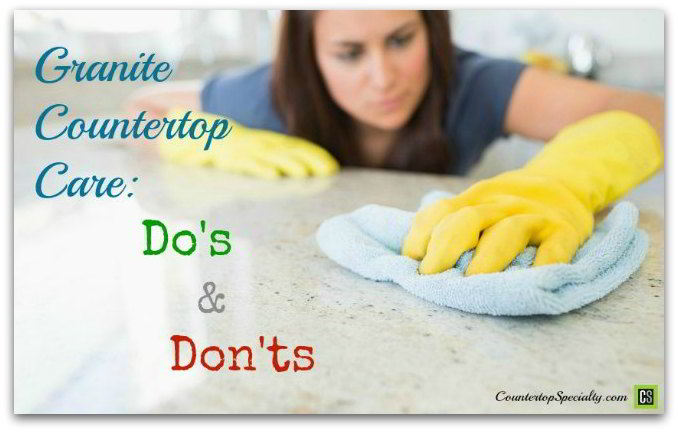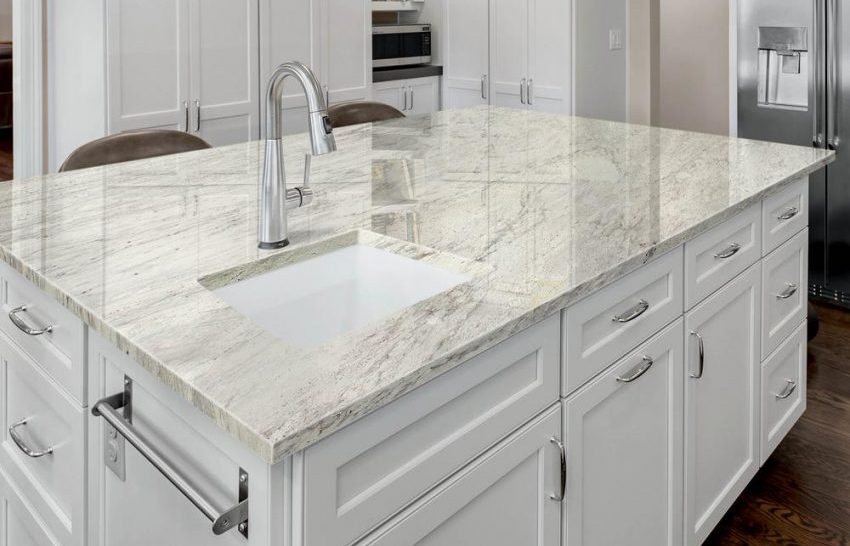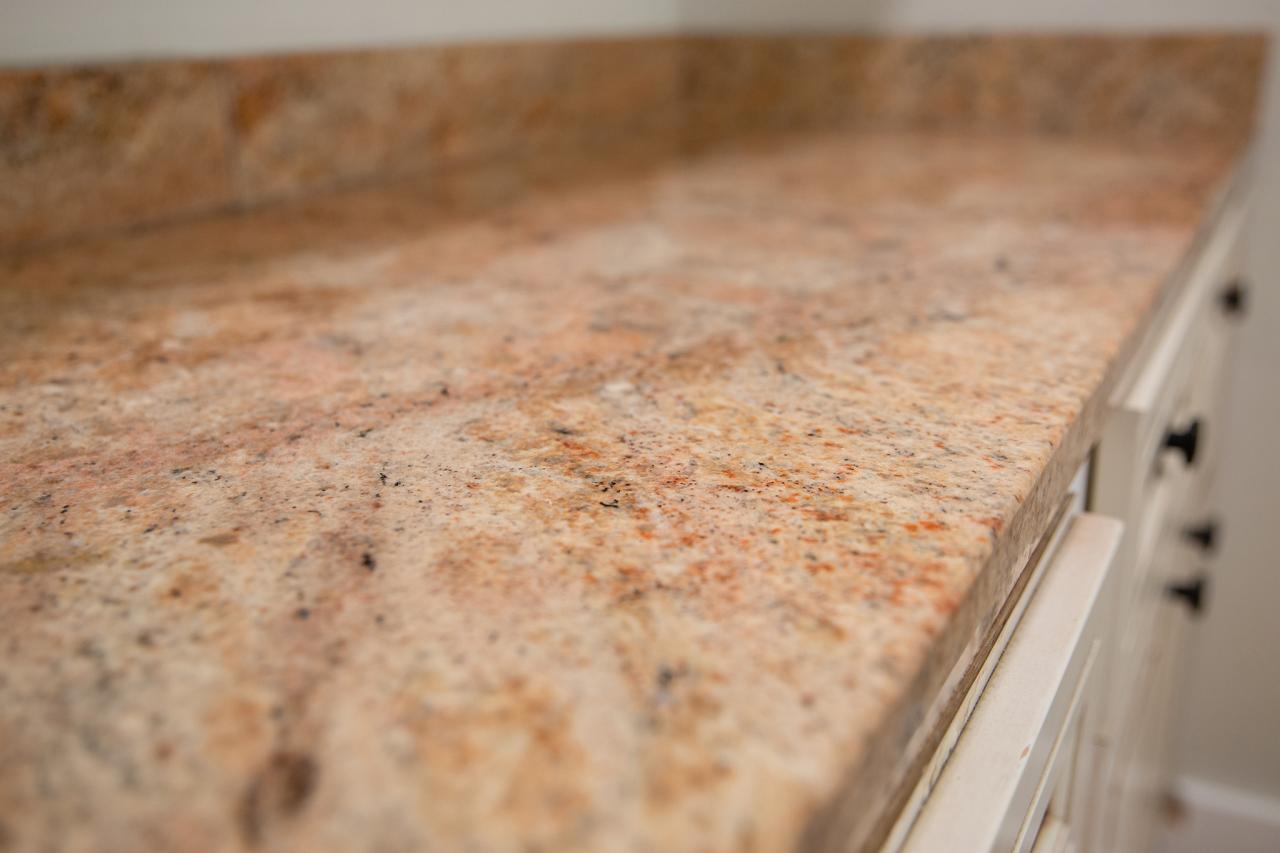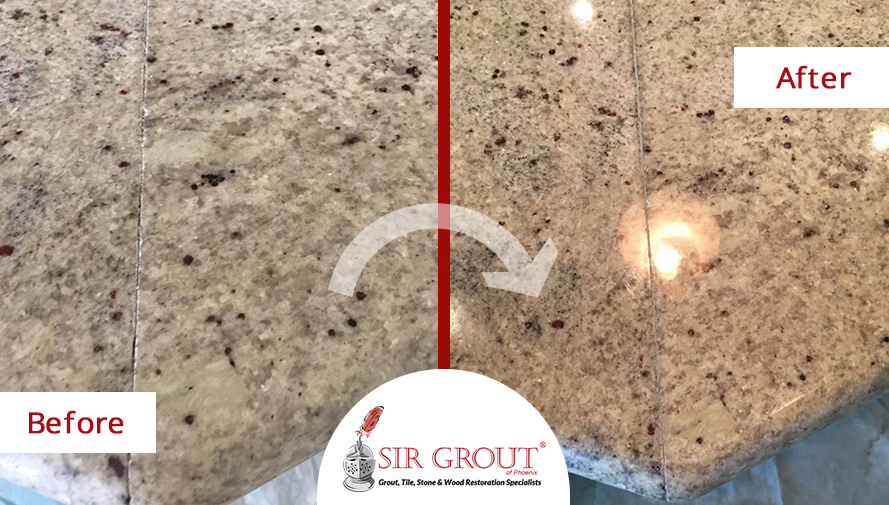Sealing granite countertops is a crucial step in maintaining the beauty and durability of this popular natural stone. Granite is known for its stunning appearance and robust characteristics, making it a favorite choice for kitchens and bathrooms. However, despite its toughness, granite is still a porous material, meaning it can absorb liquids and stains if not properly sealed. Sealing the countertops creates a protective barrier, preventing liquids, oils, and other substances from penetrating the surface and causing damage. The sealing process is relatively simple, but it requires attention to detail and the right materials to ensure long-lasting results.
The first step in sealing granite countertops is to clean the surface thoroughly. Any dirt, debris, or residue left on the countertop can interfere with the sealant’s ability to bond with the granite, resulting in an ineffective seal. To clean the granite, use a mild dish soap mixed with warm water and a soft cloth or sponge. Avoid harsh or abrasive cleaners, which can scratch the granite and compromise the sealing process. After cleaning, it’s essential to let the countertop dry completely. This might take several hours, as even small amounts of moisture can prevent the sealant from adhering properly. To speed up the drying process, you can use a fan or open windows to improve air circulation.
Once the countertop is completely dry, it’s time to apply the sealant. Various types of granite sealers are available, including penetrating and topical sealers. Penetrating sealers are the most commonly recommended for granite because they absorb into the stone, filling the pores and creating a protective barrier from within. Topical sealers, on the other hand, sit on top of the surface and can wear off more quickly. To apply the sealant, you’ll need a clean, lint-free cloth or a soft brush. Pour a small amount of the sealant onto the cloth or brush and begin applying it to the countertop in small sections. It’s essential to work in manageable areas to ensure even coverage and to avoid the sealant drying too quickly before you can spread it.
As you apply the sealant, make sure to work it into the surface using circular motions. This helps to ensure that the sealant penetrates the pores of the granite. Be thorough, covering the entire countertop, including the edges and any seams. If the sealant starts to dry before you have a chance to spread it evenly, you can add a bit more to keep it workable. After the entire countertop has been covered, allow the sealant to sit on the surface for the amount of time recommended by the manufacturer. This is usually about 15 to 20 minutes, but it can vary depending on the product. During this time, the granite will absorb the sealant, and the protective barrier will begin to form.

Once the sealant has had time to absorb, you’ll need to wipe off any excess that remains on the surface. Use a clean, dry cloth to gently buff the countertop, removing any sealant that hasn’t soaked into the granite. This step is crucial because leaving excess sealant on the surface can result in a cloudy or streaky appearance. After buffing, allow the countertop to cure for the recommended time before using it. This curing process can take anywhere from a few hours to several days, depending on the sealant used. During this time, avoid placing any heavy objects on the countertop or spilling liquids, as the sealant needs time to fully harden and provide maximum protection.
It’s important to note that sealing granite countertops is not a one-time task. Over time, the sealant can wear away, especially in high-traffic areas such as around sinks and stovetops. To maintain the protective barrier, it’s recommended to reseal the countertops every 6 to 12 months, depending on how heavily the surface is used. You can test the effectiveness of the seal by sprinkling a few drops of water on the countertop. If the water beads up, the seal is still intact. If the water soaks into the granite, it’s time to reseal.
In addition to regular sealing, proper maintenance is key to keeping granite countertops looking their best. This includes wiping up spills immediately to prevent staining and using cutting boards and trivets to protect the surface from scratches and heat damage. Avoid using acidic or abrasive cleaners, as these can strip the sealant and damage the granite. With the right care and regular sealing, granite countertops can remain beautiful and functional for many years, adding value and elegance to your home.

When selecting a sealant, it’s essential to choose a product specifically designed for granite or natural stone. Using the wrong type of sealant can result in an ineffective barrier or even damage the stone. If you’re unsure which sealant to use, consult with a professional or the supplier of your granite countertops. They can recommend a product that is compatible with your specific type of granite and provide guidance on how often you should seal it based on your usage patterns.
The environment in which the granite countertops are installed can also influence the frequency of sealing. For example, countertops in kitchens that see heavy cooking and food preparation may require more frequent sealing than those in bathrooms or less-used areas. The presence of sunlight, moisture, and other environmental factors can also impact the durability of the sealant, so it’s important to monitor the condition of your countertops regularly and reseal as needed.
It’s worth mentioning that while sealing granite countertops is an essential part of maintenance, it’s not a guarantee against all types of damage. Granite is still a natural stone, and while it’s durable, it can chip or crack if subjected to heavy impact. Additionally, while sealing helps protect against stains, it’s not entirely stain-proof. Oil-based stains, in particular, can be challenging to remove, even on sealed granite. For this reason, it’s crucial to clean up spills promptly and use coasters under oil bottles and other items that can potentially stain the surface.

Granite countertops can also vary in their porosity, meaning some stones may require more frequent sealing than others. This variation is due to the natural composition of granite, which can differ from one slab to another. Darker granites, for example, tend to be less porous and may require less frequent sealing than lighter-colored stones. Understanding the characteristics of your specific granite countertops can help you determine the best sealing schedule and maintenance routine.
For those who prefer a hands-off approach, professional sealing services are available. Hiring a professional can ensure that the sealing is done correctly and can save time and effort. Professionals have access to high-quality sealants and the expertise to apply them effectively. Additionally, they can assess the condition of your countertops and provide recommendations for ongoing maintenance. While professional sealing comes at a cost, it can be a worthwhile investment in the longevity and appearance of your granite countertops.
After sealing, it’s important to avoid common mistakes that can undermine the effectiveness of the sealant. For example, using harsh chemicals or abrasive cleaning pads can strip away the sealant, leaving the granite vulnerable to stains and damage. Similarly, neglecting to reseal the countertops regularly can lead to the sealant wearing off, exposing the granite to potential harm. Being mindful of these pitfalls and taking proactive steps to maintain the seal can help ensure that your granite countertops remain protected and beautiful.

Common Mistakes to Avoid:
One of the most common mistakes when sealing granite countertops is failing to clean the surface thoroughly before applying the sealant. Any dirt, oil, or residue left on the countertop can prevent the sealant from adhering properly, leading to an uneven seal and reducing its effectiveness. It’s crucial to take the time to clean the granite meticulously and allow it to dry completely before sealing.
Another mistake is not allowing the sealant to sit on the surface long enough before wiping off the excess. The sealant needs time to absorb into the granite and fill the pores effectively. Wiping it off too soon can result in an incomplete seal, leaving parts of the countertop unprotected. Always follow the manufacturer’s instructions regarding the application and drying times to ensure the best results.
Using the wrong type of sealant is also a common error. Not all sealants are suitable for granite, and using the wrong one can damage the stone or provide inadequate protection. It’s essential to choose a sealant that is specifically designed for granite or natural stone and to consult with a professional if you’re unsure which product to use.
Neglecting to reseal the countertops regularly is another mistake that can lead to problems over time. The sealant wears away with use, and if the countertops are not resealed as needed, they become vulnerable to stains and damage. It’s important to monitor the condition of the seal and reseal the countertops at least once a year, or more frequently if they are heavily used.
Finally, using abrasive or acidic cleaners on sealed granite countertops can strip away the sealant and damage the stone. It’s important to use gentle, pH-neutral cleaners that are safe for granite to preserve the integrity of the seal and keep the countertops looking their best.

How often should I seal my granite countertops?
Granite countertops should typically be sealed every 6 to 12 months, depending on the level of use and the type of granite. High-traffic areas may require more frequent sealing, while less-used surfaces can go longer between applications. You can test the effectiveness of the seal by sprinkling water on the countertop. If the water beads up, the seal is intact. If it absorbs, it’s time to reseal.
What is the best type of sealant for granite countertops?
The best type of sealant for granite countertops is a penetrating sealer. Penetrating sealers absorb into the stone, filling the pores and creating a protective barrier from within. This type of sealant is preferred because it offers long-lasting protection and doesn’t alter the natural appearance of the granite. Topical sealers, which sit on the surface, can wear off more quickly and may require more frequent reapplication.
Can I seal my granite countertops myself, or should I hire a professional?
You can seal your granite countertops yourself if you’re comfortable with the process and have the right materials. However, hiring a professional can ensure that the job is done correctly and efficiently. Professionals have access to high-quality sealants and can provide expert applications, which can save you time and effort. Additionally, they can assess the condition of your countertops and offer maintenance advice.

How do I know if my granite countertops need to be resealed?
To determine if your granite countertops need to be resealed, you can perform a simple water test. Sprinkle a few drops of water on the surface and observe how it behaves. If the water beads up, the seal is still effective. If the water soaks into the granite, it’s a sign that the sealant has worn off, and it’s time to reseal. You should also monitor for any signs of staining, which can indicate that the protective barrier is compromised.
What happens if I don’t seal my granite countertops?
If granite countertops are not sealed, they become vulnerable to stains, water damage, and other forms of wear and tear. Granite is a porous material, so liquids and oils can penetrate the surface, leading to stains that are difficult or impossible to remove. Over time, unsealed granite can also become dull and lose its natural beauty. Sealing the countertops creates a protective barrier that helps preserve the stone’s appearance and extend its lifespan.
Can sealing granite countertops change their appearance?
Sealing granite countertops should not significantly change their appearance if the correct type of sealant is used. Penetrating sealers are designed to absorb into the stone without altering its natural color or finish. However, some sealants can enhance the stone’s color slightly, making it appear more vibrant. It’s important to test the sealant on a small, inconspicuous area before applying it to the entire countertop to ensure you’re happy with the results.

See How a Stone Sealing and Seam Repair Made This Granite

Related articles: